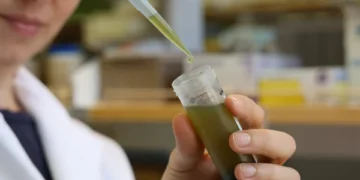Scientists in China have developed a new camouflage material that changes color based on its surroundings. This material could help create objects that are invisible to the naked eye in the future.
Many animals have the ability to camouflage themselves to blend in with their surroundings. Replicating this process in human-made systems is complex and involves multiple dimensions, where the system identifies the surroundings, understands their characteristics, and then makes changes accordingly.
In research published in Science Advances, scientists stated that traditional camouflage systems rely heavily on electronics, which face issues such as complex structures, difficult usage, and high costs.
The research explains that the new material undergoes a specific process called self-adaptive photochromism (SAP), allowing it to blend with its surroundings like an octopus or chameleon. When the SAP material is exposed to light of a specific wavelength, its molecules rearrange, causing the material to change color.
The scientists claim that compared to previous human-made camouflage systems, the new SAP material is simpler, cheaper, and easier to use.




















